Santa Cruz has methodically been working through its line-up, giving nearly all of its full-suspension bikes a complete makeover.
After two years since its last spruce up, it’s now time for the 5010 to have a refresh.
While the silhouette of the latest, fourth-generation 5010 looks almost identical to that of the Nomad, Bronson, Hightower, Heckler, Megatower and Tallboy, if you dig a little deeper, there are plenty of differences to be found.
- Juliana introduces some massive changes to the Furtado, but promises to keep it fun and agile
- Santa Cruz has finally launched an ebike and it’s rad (and expensive)
- Santa Cruz adds 10mm travel and heaps of radness to the 2020 Tallboy
Five things you need to know about the new Santa Cruz 5010
- The new 5010 is built around 650b wheels
- Compared to the previous 5010, the latest bike has a considerably slacker head angle (it differs by 0.8 degrees) and has 15mm more reach (size large)
- There are five sizes on offer (XS to XL)
- Chainstay lengths vary from size to size (ranging from 423mm on the XS to 432mm on the XL)
- There’s currently no alloy version but it does come in Santa Cruz’s ‘C’ or ‘CC’ carbon in six different build packages
Suspension details

It’s all change for the new 5010. Well, almost.
While it’s still built around the smaller, 650b wheels, or, as Santa Cruz put it, “the fun-sized wheel size”, the geometry and frame layout are totally different to the 5010 launched back in 2018.

Like pretty much every other full-suspension in Santa Cruz’s lineup, the 5010 now adopts its latest, low-slung VPP (Virtual Pivot Point) design.
This involves the lower of the two counter-rotating links to drive the rear shock, as opposed to the old design where the upper link was connected to it.
To keep weight nice and low in the frame, the shock pierces the seat tube and mounts neatly to a kinked down tube.
Due to the shock’s position, Santa Cruz has bolted a small mudguard in place to help protect it from debris and mud flying off the rear wheel.
In terms of travel, there’s still 130mm on tap at the rear, though the new bike is designed around a longer 140mm travel fork.
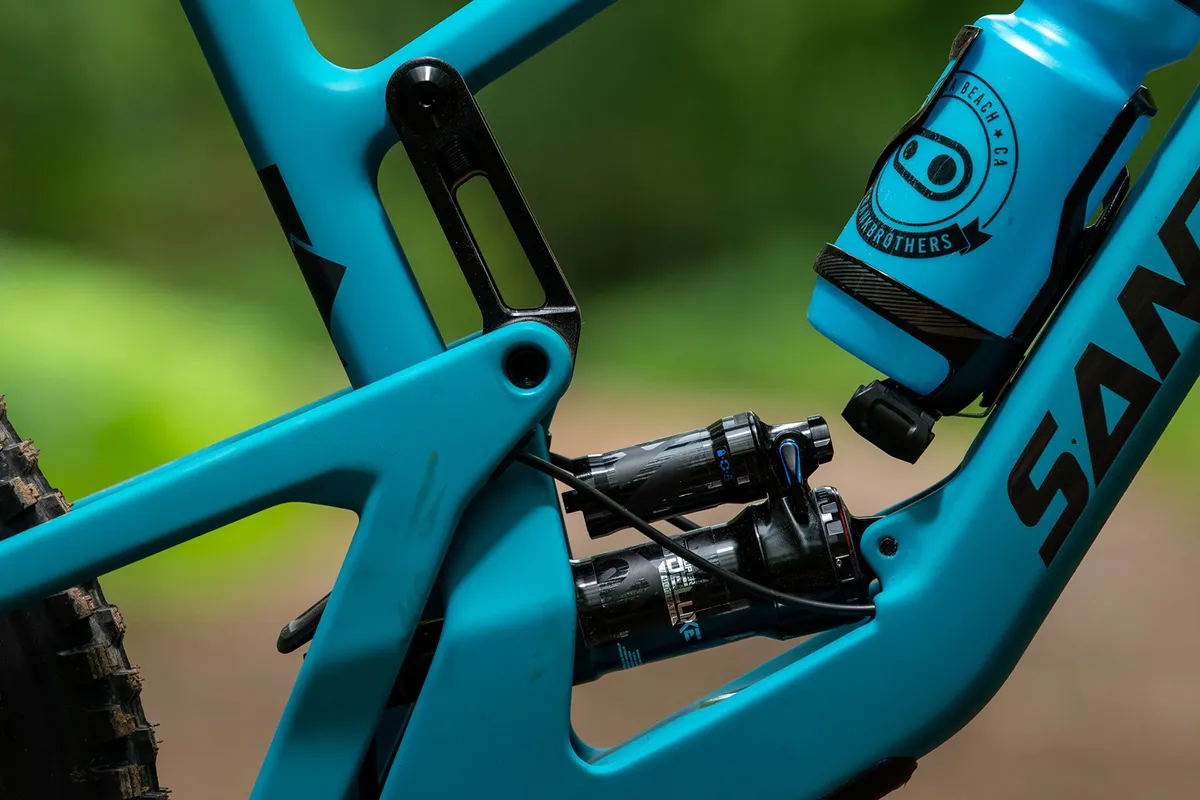
Santa Cruz has tweaked the 5010’s leverage to make it more progressive. It's also done away with the regressive hump through the first 50mm of travel the old 5010 had, and totally ironed out the curve to produce an almost straight line that drops from 3:1 at the start of the travel down to 2.3:1 at 130mm.
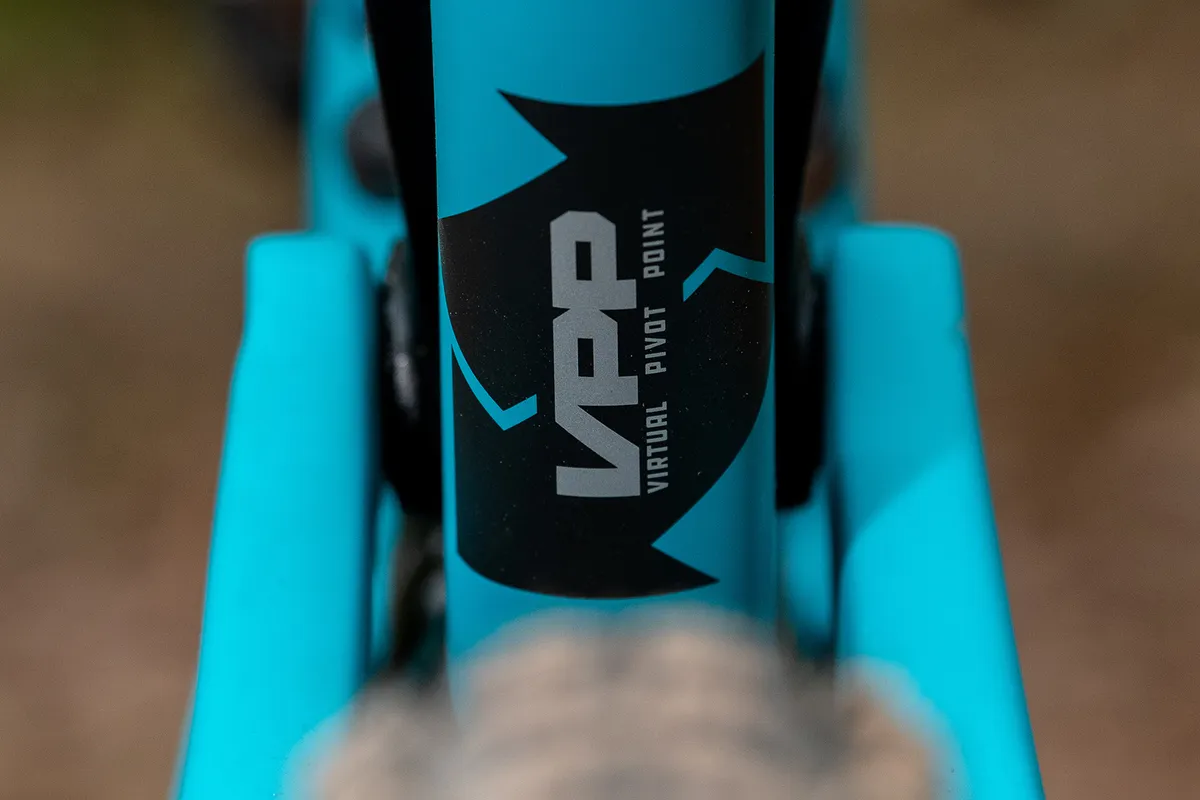
Santa Cruz claims these changes enable the 5010 to work with a coil or an air shock as well as delivering a more predictable feel, and should make setup that bit easier.
Frame details and updated geometry
Santa Cruz is offering the 5010 in five sizes (XS through XL) with reach figures varying from 400mm to 500mm (in the high setting).
Despite the brand wanting to create an “agile and playful” bike, it's still stretched the latest edition out compared to its predecessor.

The difference in reach figures varies between frame sizes, but each size of 2020's 5010 is bigger over the 2018 model.
To give you an idea, there’s a 15mm difference when comparing the old size large with the new one (from 460mm on the 2018 model to 475mm on the latest version).
Changing chainstays
What’s really exciting about the new 5010 is that as the frame size grows, so does the effective chainstay length/rear centre (centre of bottom bracket to centre of rear axle).
It’s something we’ve seen before from brands such as Norco, and smaller manufacturer’s such as Forbidden and GeoMetron/Nicolai, but it’s rarely seen from the likes of a brand as big as Santa Cruz, especially when the frames are only available in carbon (due to the additional costs changing something such as this can incur).
- The ultimate guide to bike geometry and handling
- The BikeRadar Meets Podcast | Chris Porter on all things geometry and suspension
Santa Cruz says it's done this to give riders the “optimal balance” between the wheels. The variation across all five sizes is 9mm, and starts at 423mm on the XS frame, and finishes at 432mm on the XL.
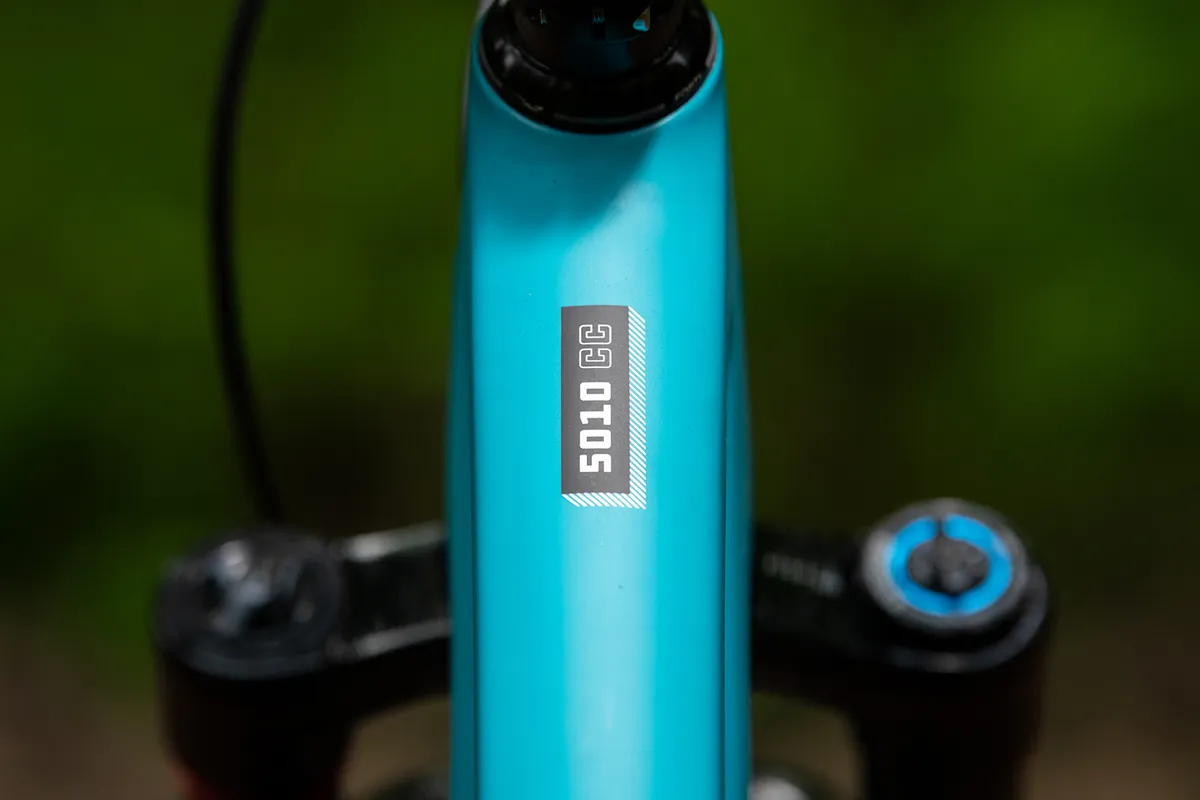
Santa Cruz achieves this change in rear centre length by altering the linkage position on the front triangle (by moving the pivot contact points on the front triangle as the front triangle increases in size).
Here’s how Santa Cruz explains it: “Both main pivots points (where links connect to front triangle) move on each size. But, kinematics do not change because the distance and position of all the links in relation to one another do not change”.
The physical dimensions of the rear triangle remain the same across all sizes.
The new 5010 has a slacker head angle than the third-generation 5010 too. At 65.4 degrees, this translates to a change of 0.8 degrees in the low setting.
The effective seat-tube angle has increased significantly, though. At 76.8 degrees on the size large in the low setting, it’s pretty steep by today’s standards and should help to keep things feeling nice and efficient on the climbs.
Bumper BB height
Santa Cruz has increased the bottom bracket height marginally. That’s because the new bike doesn’t come with a 2.6in tyre spec option (which would bump up BB height compared to the smaller 2.3in tyres it was also offered with).
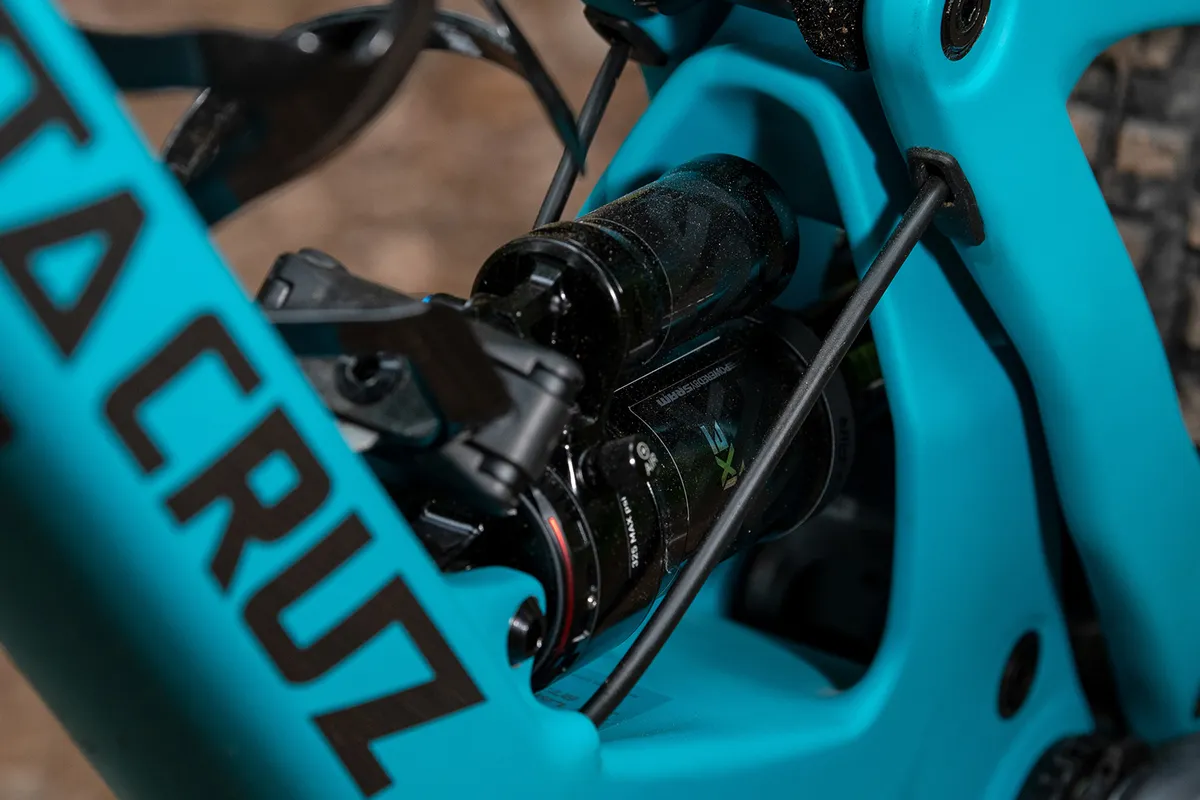
The difference between the old and new BB height is just 4mm, which sits it a decently low 334mm in the low setting.
While Santa Cruz no longer specs the plumper 2.6in rubber as a build option (my bike came with 2.4in tyres), the 5010 is still capable of accommodating 2.6in tyres should you wish (though they’ll lift the BB up higher).
Flip chip geometry changes
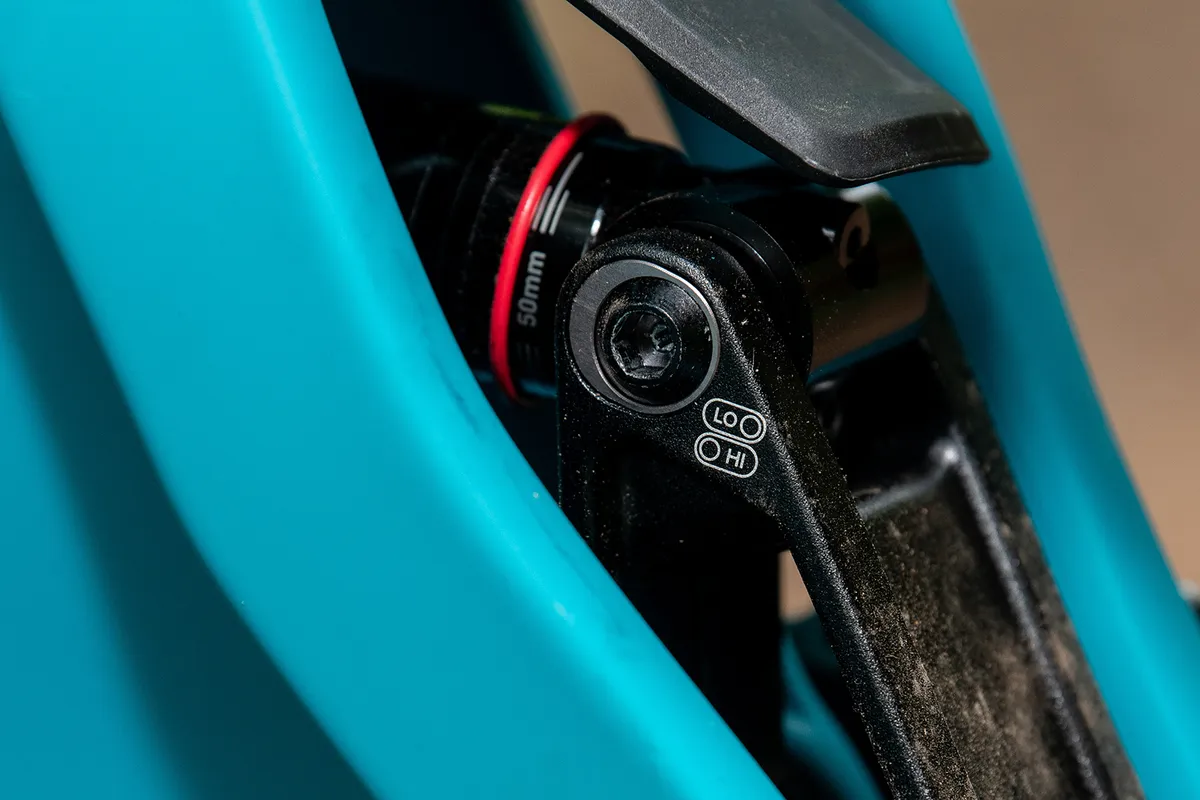
You may have noticed that I’ve mentioned high and low settings already. That’s thanks to a flip chip on the rearmost shock mount which lets you switch between the two, without too much hassle.
Changing this alters the head angle by 0.3 degrees, the seat angle by 0.4 degrees and alters bottom bracket height by 4mm.
Other frame details include internally routed cables and brake hoses, a threaded bottom bracket, and, interestingly, SRAM’s new Universal Derailleur Hanger (UDH) which Santa Cruz says is solid and simple, works with all brands of drivetrains and will rotate backwards if your derailleur takes a hit, which could save it.
Finally, Santa Cruz isn’t offering the new 5010 in aluminium (though this may change down the line). As it stands, there are currently only options in its ‘C’ or pricier ‘CC’ carbon available.
2021 Santa Cruz 5010 models and pricing
The 5010 comes in six different build options (four made from the ‘C’ carbon, two made from the ‘CC’ carbon).
All models have a 140mm fork, though it’ll be a Fox 34 on the R and S, and a RockShox Pike on bikes with the Shimano XT or SRAM X01 build kits.
Brakes will come as either SRAM G2 with 180mm rotors or Shimano four-piston XT trail brakes.
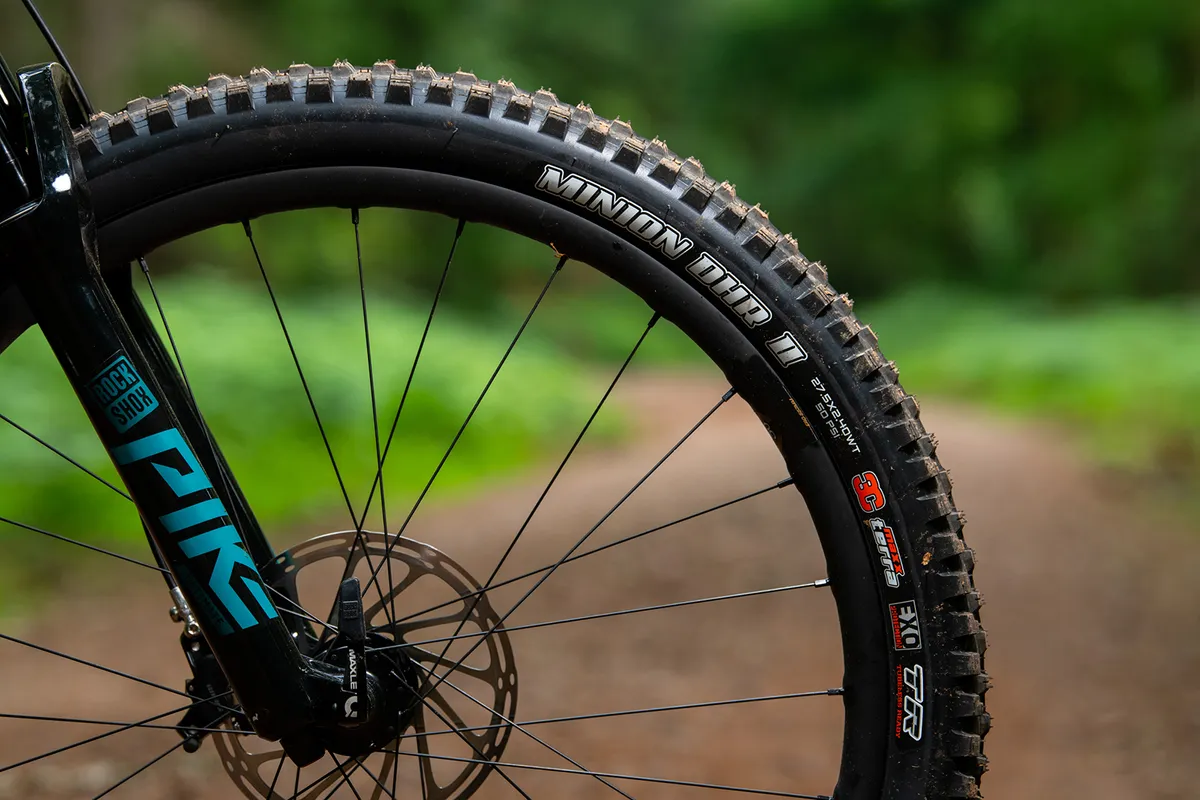
Tyres are the ever-popular Maxxis Minion DHR II in 2.4in with the EVO casing, and the compounds will be MaxxGrip up front and MaxxTerra at the rear across every model, which is great to see.
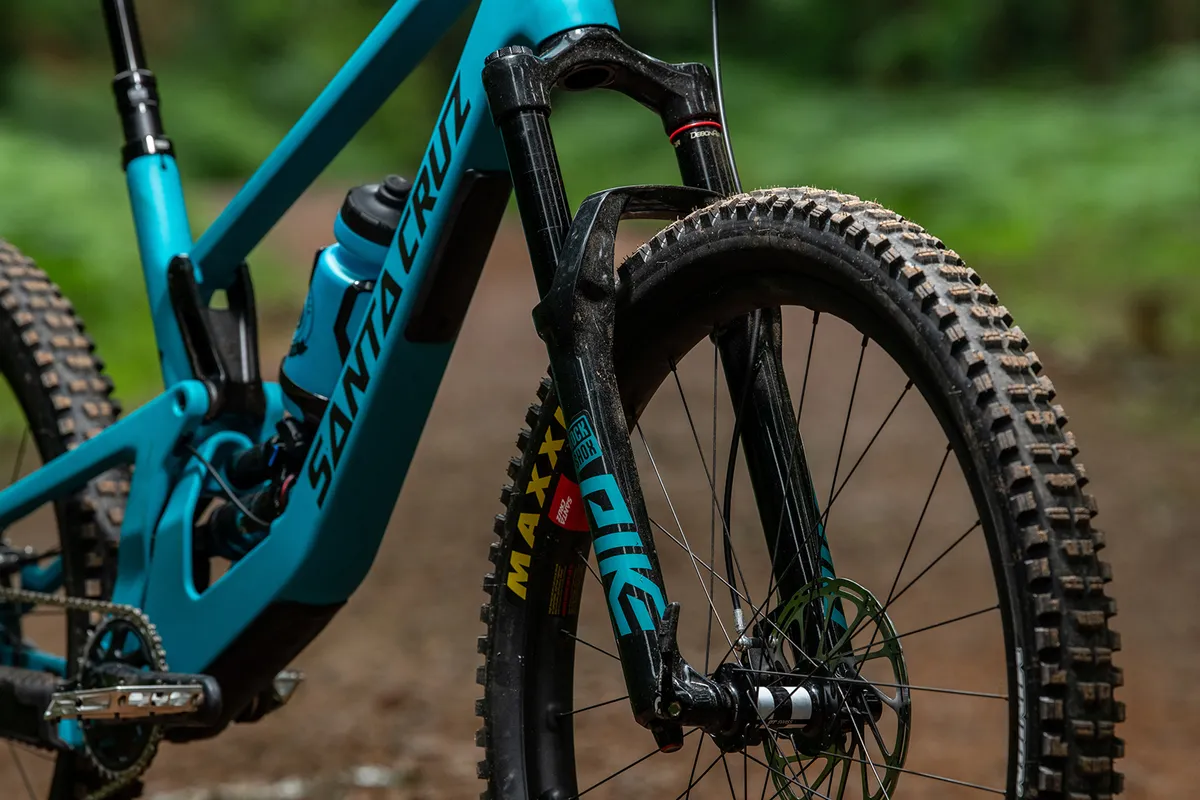
There are two builds (C XT RSV and CC X01 RSV) where Santa Cruz’s carbon Reserve wheels are available.
These are the 30mm internal width numbers and the second generation of the rims, which include subtle updates to the carbon layup and profile, which the brand claims makes them even stronger.
Every model and size includes a 40mm stem, some of which will come courtesy of UK brand (and Syndicate sponsor) Burgtec.
2021 Santa Cruz 5010 C R

- Frame: Carbon C 27.5in, 130mm travel
- Shock: Fox Float Performance DPS
- Fork: Fox Rhythm 34, 140mm travel
- Drivetrain: SRAM NX 12-speed
- Price: £4,099 / $4,099
2021 Santa Cruz 5010 C S

- Frame: Carbon C 27.5in, 130mm travel
- Shock: RockShox Super Deluxe Select+
- Fork: Fox 34 Float Performance, 140mm
- Drivetrain: SRAM GX Eagle 12-speed
- Price: £4,999 / $4,999
2021 Santa Cruz 5010 C XT

- Frame: Carbon C 27.5in, 130mm travel
- Shock: RockShox Super Deluxe Select+
- Fork: RockShox Pike Select+, 140mm
- Drivetrain: Shimano XT M8100 12-speed
- Price: £5,999 / $5,999
2021 Santa Cruz 5010 C XT RSV

- Frame: Carbon C 27.5in, 130mm travel
- Shock: RockShox Super Deluxe Select+
- Fork: RockShox Pike Select+, 140mm
- Drivetrain: Shimano XT M8100 12-speed
- Price: £7,199 / $7,199
2021 Santa Cruz 5010 CC X01

- Frame: Carbon CC 27.5in, 130mm travel
- Shock: RockShox Super Deluxe Ultimate
- Fork: RockShox Pike Ultimate, 140mm
- Drivetrain: SRAM X01 12-speed
- Price: £6,499 / $6,899
2021 Santa Cruz 5010 CC X01 RSV

- Frame: Carbon CC 27.5in, 130mm travel
- Shock: RockShox Super Deluxe Ultimate
- Fork: RockShox Pike Ultimate, 140mm
- Drivetrain: SRAM X01 12-speed
- Price: £7,599 / $8,099
2021 Santa Cruz 5010 CC frame
- Frame: Carbon CC 27.5in, 130mm travel
- Price: $3,299
Santa Cruz 5010 CC X01 RSV first ride impressions
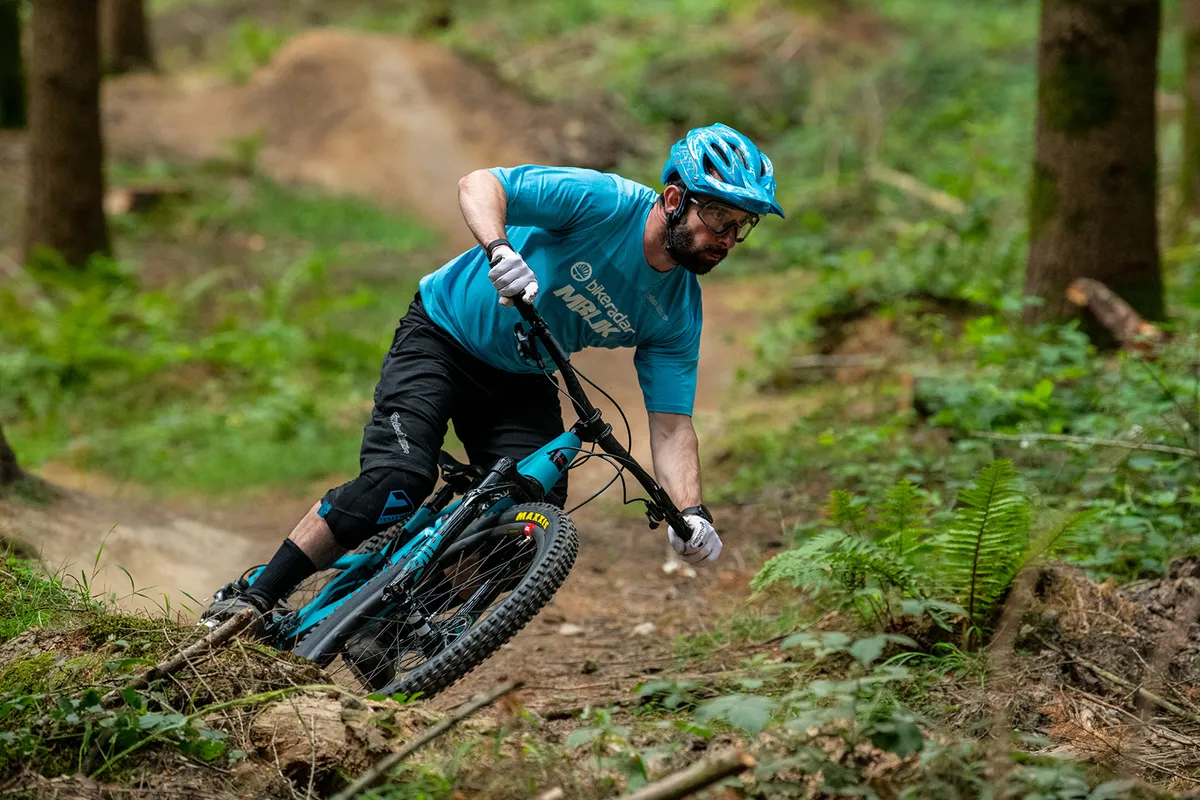
The new 5010 feels efficient and really comfy on the climbs thanks to the stable platform the VPP suspension manages to create, with very little movement from the back end when sat down and pedalling.
The steep seat-angle helps contributes here, helping to perch you nicely over the bottom bracket.
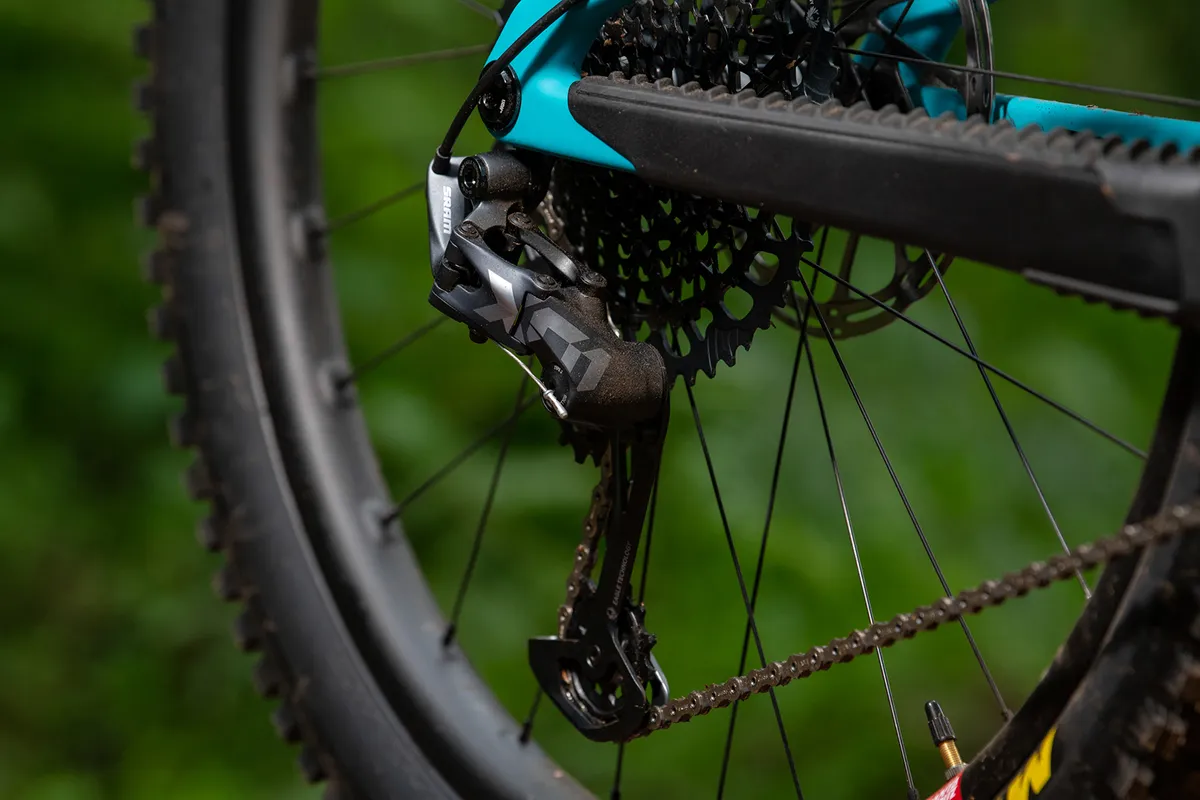
As I winched up rougher climbs, I did notice some pedal kickback when the rear wheel moved up and over square-edged hits, but it never disrupted my pedalling rhythm or caused my feet to move on my flat pedals.
There’s no doubting Santa Cruz has managed to fulfil its brief though and, when pointed downhill, the 5010 is seriously fun to ride.
The frame feels taut and responds rapidly to rider inputs with lightning-quick reactions. It’s eager and easy to throw the new 5010 from turn to turn, or just loft the front wheel up into the air and manual through a section.
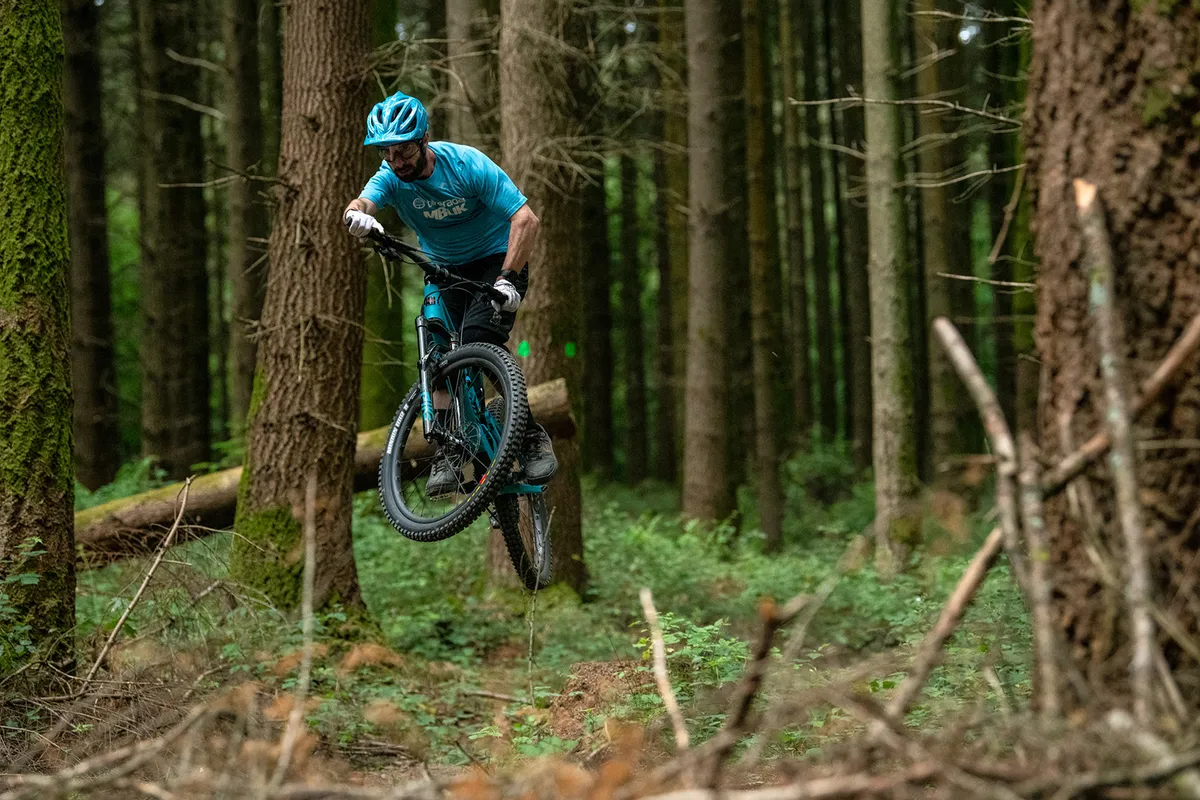
The shape and feel through the bike combined with the progressive nature of the rear end make it easy to forget the bike has just 130mm of travel, and getting carried away on the 5010 can happen in the blink of an eye.
Pummel through something really rough though, and you’ll soon remember because the rear suspension is smooth enough to iron out smaller hits but will skip over rather than soak up successive impacts – which is no bad thing.

I really appreciated the level of progression when landing hefty drops to flat.
Santa Cruz provides a solid set of base settings to work from and I found that the pressures in both the shock and fork were close to what I wanted, but I did add a touch more rebound damping to both units.
We’ll have a full review of the 5010 coming soon, so stay tuned.
